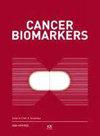Circulating tumor DNA (ctDNA) as a biomarker of response to therapy in advanced Hepatocellular carcinoma treated with Nivolumab.
IF 2.2
4区 医学
Q3 ONCOLOGY
引用次数: 0
Abstract
BACKGROUND Circulating tumor DNA (ctDNA) is a promising non-invasive marker for detection, diagnosis, treatment selection, and prognosis of hepatocellular carcinoma (HCC). OBJECTIVE This study aimed to examine the utility of ctDNA as a prognostic and predictive tool in HCC patients treated with nivolumab. METHODS We analyzed pre-treatment ctDNA from 44 HCC patients using comprehensive genomic testing on a commercially available platform. We utilized log rank test and univariate Cox models to correlate overall survival (OS) and progression-free survival (PFS) with ctDNA expressions. RESULTS Of 44 patients, 77.3% were men with median age of 67 years. All but 3 patients had at least one alteration identified, and TP53 was the most commonly altered gene (52.3%). Median OS was 17.5 months (95% CI: 12.7, NA). Mutations involving PIK3CA, BRCA1, and CCND1 amplification were associated with shorter OS (P 0.0001, 0.0001 and 0.01, respectively). Median PFS time was 4.01 months (95% CI: 3.06, 9.33). Mutations involving KIT and PIK3CA were associated with shorter PFS (P 0.0001 and 0.0004, respectively), while mutation involving CTNNB1 were associated with longer PFS (p= 0.04). CONCLUSIONS ctDNA profiling may provide a benefit for prediction of survival and progression of HCC patients treated with nivolumab. Future studies are needed for confirmation.循环肿瘤 DNA (ctDNA) 作为 Nivolumab 治疗晚期肝细胞癌疗效的生物标记物。
背景循环肿瘤DNA(ctDNA)是肝细胞癌(HCC)检测、诊断、治疗选择和预后判断的一种很有前景的非侵入性标记物。目的本研究旨在检验ctDNA作为预后和预测工具在接受尼伐单抗治疗的HCC患者中的实用性。方法我们利用市售平台上的综合基因组检测分析了44名HCC患者治疗前的ctDNA。我们利用对数秩检验和单变量 Cox 模型将总生存期(OS)和无进展生存期(PFS)与 ctDNA 表达相关联。除3名患者外,所有患者都至少发现了一种基因改变,TP53是最常见的改变基因(52.3%)。中位OS为17.5个月(95% CI:12.7,NA)。涉及PIK3CA、BRCA1和CCND1扩增的基因突变与较短的OS相关(P分别为0.0001、0.0001和0.01)。中位生存时间为4.01个月(95% CI:3.06,9.33)。涉及KIT和PIK3CA的突变与较短的PFS相关(P分别为0.0001和0.0004),而涉及CTNNB1的突变与较长的PFS相关(P= 0.04)。需要未来的研究加以证实。
本文章由计算机程序翻译,如有差异,请以英文原文为准。
求助全文
约1分钟内获得全文
求助全文
来源期刊

Cancer Biomarkers
ONCOLOGY-
CiteScore
5.20
自引率
3.20%
发文量
195
审稿时长
3 months
期刊介绍:
Concentrating on molecular biomarkers in cancer research, Cancer Biomarkers publishes original research findings (and reviews solicited by the editor) on the subject of the identification of markers associated with the disease processes whether or not they are an integral part of the pathological lesion.
The disease markers may include, but are not limited to, genomic, epigenomic, proteomics, cellular and morphologic, and genetic factors predisposing to the disease or indicating the occurrence of the disease. Manuscripts on these factors or biomarkers, either in altered forms, abnormal concentrations or with abnormal tissue distribution leading to disease causation will be accepted.
 求助内容:
求助内容: 应助结果提醒方式:
应助结果提醒方式:


